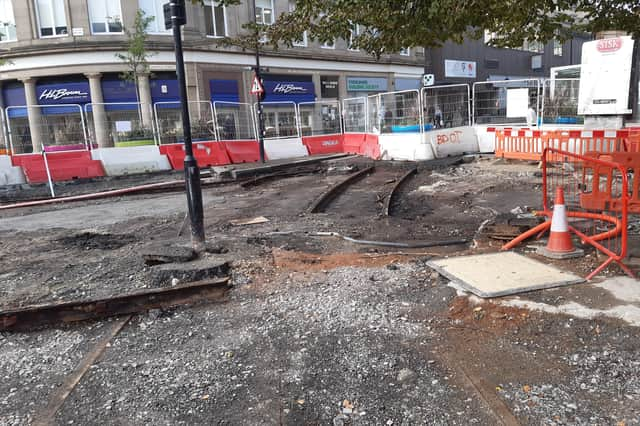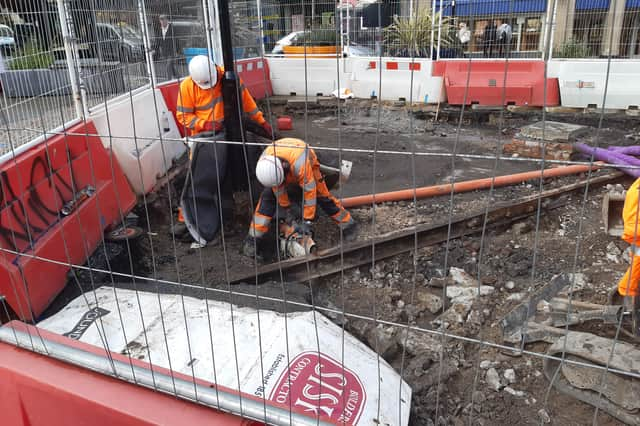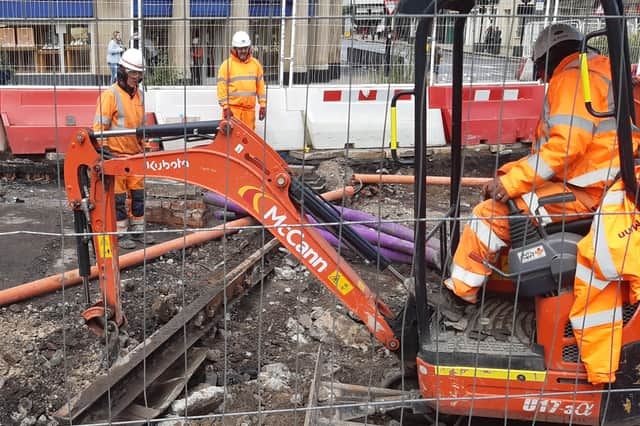Calls to preserve heritage as historic Sheffield tram tracks torn out for Fargate development
and live on Freeview channel 276
And decades after tram tracks were last used at the top of Fargate, some residents want to see this part of the city's heritage preserved after they were exposed for the first time in generations.
Advertisement
Hide AdAdvertisement
Hide AdThe steel tracks have been buried under the road surface since the city stopped running its original tram network in 1960, but have been exposed again as workmen carry out work as part of a development scheme which aims to revitalise Fargate.


Workmen can be seen to be carrying out work to remove them, cutting sections of the steel, and then taking diggers to the tracks to pull them out.
Sheffield Council says it will look into what can be done with the old tracks.
The authority said in a statement: "Some of the former tram tracks at the top of Fargate may need to be removed as part of the ongoing regeneration work. Once it is clear how many have to be taken up, the council will explore options for what can be done with them."
Advertisement
Hide AdAdvertisement
Hide Ad

The Star has asked residents how they feel about the removal of the tracks which were once a vital part of the city's transport network, in an era long before the current supertram system brought trams back to the city again in the mid 90s. And some are keen to see them used for a heritage feature.
Aislinn Adams, from Firth Park said: "It's really sad isn't it? It's part of the history of Sheffield and the city centre. (I'd like to see) them keeping them and making a little landmark out of them."
Susan Raine, from Firth Park, said: "I suppose it is a bit of a shame."


Barbara Jackson, from the Graves Park area, said she had been totally unaware that there were tram tracks there. She said: "Unless its a danger or it's interfering with services, why not just leave them?"
Advertisement
Hide AdAdvertisement
Hide AdShe said she thought it would be a good idea to do something heritage-related with them. She said: "People in the 50s, I was a kid, we were very fond of those old trams, so a small section as a bit of a heritage feature would be a good idea."
Glenys Beaumont, of Dronfield, said: "It would be quite nice to have them as a little memorial somewhere to show that they were actually in Sheffield at some point on this road."
Sheffield's original tram system covered large sections of the city. It originally opened up to passengers in 1873, using horse drawn trams, and initially running between Lady's Bridge and Attercliffe. It was was extended over the years it operated.
The first electric tram was introduced in 1899, between Nether Edge and Tinsley, and by 1902 all the routes were electrified. By 1951, it has been reported that there were around 51 miles of track in the city.
Advertisement
Hide AdAdvertisement
Hide AdThe last trams ran between Leopold Street to Beauchief and Tinsley on October 8, 1960 , and three of the city's Sheffield trams were later preserved at the National Tramway Museum in Crich, in North Derbyshire.
Comment Guidelines
National World encourages reader discussion on our stories. User feedback, insights and back-and-forth exchanges add a rich layer of context to reporting. Please review our Community Guidelines before commenting.
